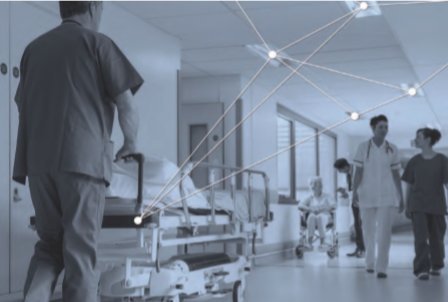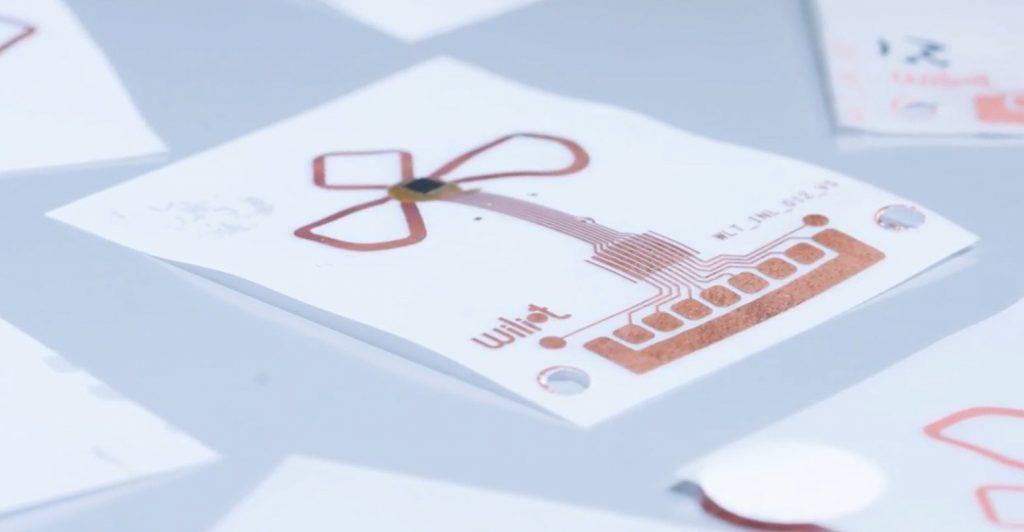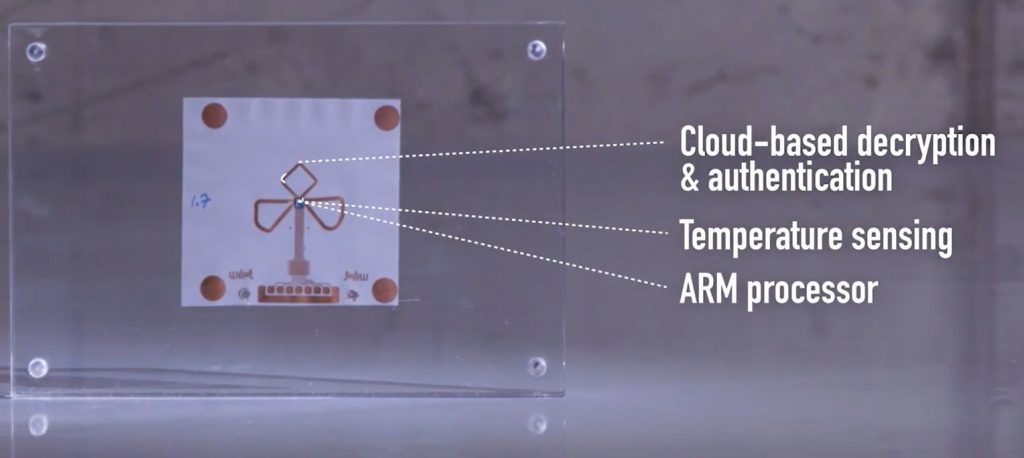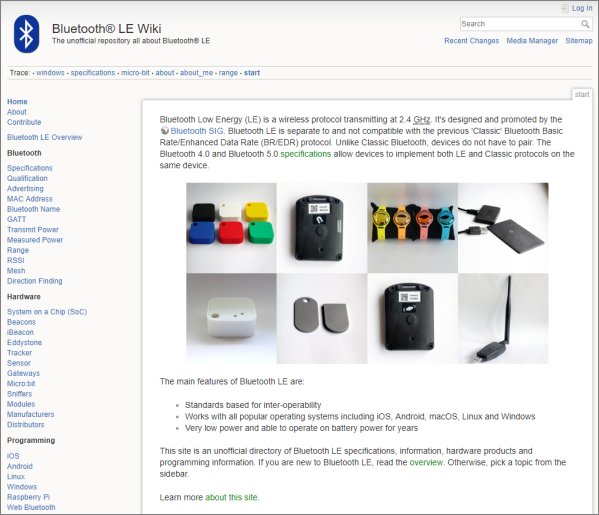Ever wondered where our Minew beacons originate? Minew have a new video, with strange ‘robo’ voice, showing their offices and factory:
Angle of Arrival Explanation and Demo
Silicon Labs have a new video that explains and demonstrates angle of arrival (AoA) and angle of departure (AoD):
They also have a paper explaining how AoA works.
Waze Beacons in Tunnels
It was recently reported that Waze expands its Bluetooth beacons to New York City to end GPS signal blackouts. If you want to see how the system works, take a look at the recent video of Waze Bluetooth beacons in the Bjørnegård tunnel:
The video shows in-tunnel navigation and at the end there’s a more entertaining piece that shows the strength of the 3M VHB stickers.
New Bluetooth LE Wiki
There’s a new Bluetooth LE Wiki maintained by our founder, Simon Judge:
The Wiki includes information about Bluetooth LE idioms such as advertising, MAC address, Bluetooth name, GATT, transmit power, measured power, range, RSSI, mesh and the new direction finding feature. It also has links to hardware and programming information.
Asset Tracking Software Insights
We previously wrote about Using Beacons, iBeacons for Asset Tracking and Bluetooth vs UWB vs RFID for RTLS. This post considers the strengths of Bluetooth for asset tracking and provides some insights if you looking for asset tracking software.
The traditional way of tracking assets using barcodes, NFC or RFID requires that someone of something scan the items at very close range. Bluetooth has the advantage that it works up to 70m, sometimes up to 300m allowing the reading to be done:
- Without moving the items, saving infrastructure such as conveyor belts
- Without human involvement, saving time
- Continuously
The affect of ‘continuously’ is subtle but powerful. With traditional scanning, information as to the whereabouts of an item is only as good as the last scan that could be minutes, hours or even days ago. If the item moves without scanning, finding it can be very difficult. Bluetooth asset tracking is updated continuously.
Although beacons cost more than barcodes, NFC and RFID, the readers, usually gateways, cost considerably (x10) less. As the beacons are Bluetooth, for some scenarios the readers are ‘free’ as you can use smartphones already in use. Nevertheless, beacons cost ($5 to $40) more than barcodes so tend to be used on aggregated items such as pallets and sub-assemblies or on single valuable items.
Beacons go beyond simple simple assets tracking into the Internet of Things (IoT). The same beacons can monitor quantities such as vibration, temperature, humidity, light, proximity, smoke and gas. Using beacons for extra purposes such as sensing and providing triggered information about assets can often be the most compelling aspect of using beacons.
When it comes to software, think carefully. Most people expect functionality similar to traditional barcode-based asset tracking with software on a server somewhere. While the equivalent exists in the form of RTLS systems that put beacons onto maps and plans, it’s sometimes possible to implement a simpler solution to get the job done. Could your requirements be met with just an app? One such example is the work we did for Malvern instruments that’s a simple app that does a stock check by scanning for beacons as the user moves about their site. Also, we have found that many organisations don’t actually need a full asset management solution but instead need something that can capture beacon data and make it available to their existing systems. Our BeaconServer™ fulfils that role.
Read about Asset Tracking for Manufacturers
Using Beacons in Healthcare
Russ Sharer, Vice-President of Global Marketing for Fulham, a manufacturer of energy-efficient lighting sub-systems has written an article in Health Estate Journal (pdf) on the use of iBeacons in healthcare.

Russ says it’s often difficult to find life saving equipment in hospitals and many organisations have to compensate by purchasing more equipment than they need. However, in use, equipment still gets misplaced, usually just at the critical time it is needed. He explains how the use of Bluetooth beacons and mesh can solve this problem. The article provides a great introduction to iBeacons and some issues such as the affect of frequency of transmission on battery life.
While the article mentions Bluetooth Mesh and iBeacons, these specific technologies don’t always have to be used. Gateways can be used instead of mesh to allow greater throughput of data. Also, any beacons, not just iBeacons, can be used as it’s usually the MAC address of the beacon that’s used for identification purposes. Using sensor beacons allows further scenarios, for example, monitoring the temperature of expensive medicines.
There are also many more scenarios for the use of beacons in healthcare than are mentioned in the article. Our beacons are being using to track hundreds of dementia patients. We have also been involved in a project to use beacons for navigation in large hospitals. Once there’s a network of beacons in a hospital, it’s possible to add lots of widely varying solutions.
Inside Wiliot
Mr Beacon has a new video showing what’s inside Wiliot – inside their offices, factory and inside their battery-less Bluetooth sensor tag.

The video explains how the tag has two processors. The first, a standard ARM Cortex M0, is used for main processing while the second works using only extremely low, nano Watts of, power. The low power processor schedules jobs for the Cortex M0 for when the tag has harvested enough energy.

Wiliot are mixing the best of the Bluetooth and RFID ecosystems. They are taking RFID-like production and costs and combining it with the advantages of Bluetooth’s ability to communicate with ubiquitous devices.
Bluetooth vs UWB vs RFID for RTLS
In the past, before Bluetooth Low Energy (LE) was introduced in 2010, real time locating systems (RTLS) used costly Ultra Wide Band (UWB) devices or radio frequency id (RFID).
Bluetooth LE is increasing being used for RTLS due to:
- the availability of much lower cost Bluetooth devices, up to 1/4 the price of UWB.
- a much longer battery life than UWB, 5+ years for some devices.
- a much longer range than RFID, up to 300m vs cm.
- the ease of detecting beacons via apps and single board computers using existing operating system Bluetooth APIs
- the availability of low cost Bluetooth gateways
- being based on standard Bluetooth rather than proprietary UWB protocols, custom devices and specialist skills
Read more about Beacons and Real Time Locating Systems (RTLS)
New Bluetooth Direction Finding Feature
A new direction finding feature has been released for Bluetooth 5.1 (pdf). Using more than one antenna, as used by Quuppa, allows for direction finding.
The paper on Enhancing Bluetooth Location Services with Direction Finding explains how location services currently use RSSI to estimate the distance. Direction finding introduces more advanced Angle of arrival (AoA) and angle of departure (AoD) techniques into Bluetooth 5.
“Should smartphone vendors choose to include Bluetooth direction finding with AoA support in their products, item finding solutions could be enhanced to provide directional information.”
As with the move from Bluetooth 4 to Bluetooth 5 it’s going to be while before we see (non Quuppa) products with direction finding. This feature requires specific hardware and software. Before that, it needs SDKs from the SoC vendors. Existing smartphones, beacons and gateways won’t be able to be upgraded.
Read about Using Beacons, iBeacons for Real-time Locating Systems (RTLS)
Minew IoT G1 Bluetooth Gateway Testing
If you want to quickly demonstrate or test IoT, the G1 gateway comes pre-setup to send data to beaconyun.com, Minew’s platform for testing.
The following video gives and overview of the platform and how it’s used:
The video mentions entering a beacon’s MAC address. Our article on Testing if a Beacon is Working explains how to find a MAC address.
More information:
Beacon Proximity and Sensing for the Internet of Things (IoT)
